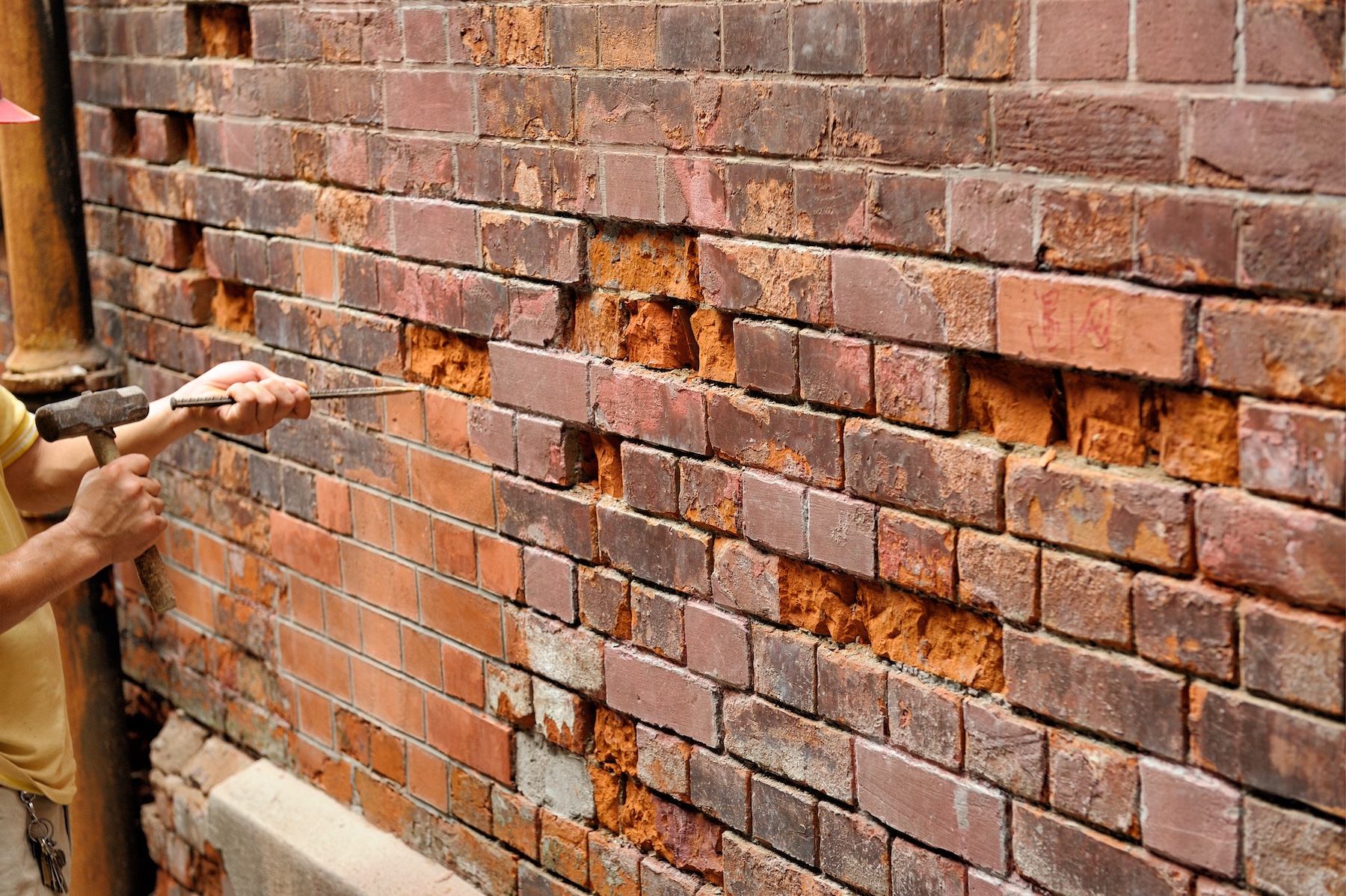PREVENTION METHODS
The type of material, parts of masonry construction, moisture, weather, and climate conditions can all contribute to the formation of cracks in masonry structures. Here are some ways in which these factors can impact masonry and lead to cracks:
1. Material Selection: The choice of masonry materials plays a significant role in determining the structural integrity of a construction. If inferior or low-quality materials are used, they may have inherent weaknesses or insufficient strength to withstand the loads and stresses imposed on them. This can result in cracks over time.
2. Design and Construction: The design and construction practices employed can affect the susceptibility of masonry to cracking. Poor construction techniques, inadequate reinforcement, improper joint detailing, or insufficient expansion and control joints can lead to increased stress concentrations and ultimately result in cracks.
3. Moisture: Moisture is a common cause of masonry cracking. When water infiltrates masonry, it can cause the materials to expand and contract as it goes through cycles of wetting and drying. This expansion and contraction can exert significant pressure on the masonry, leading to cracks. Freeze-thaw cycles in cold climates can exacerbate this issue as the water freezes and expands, further stressing the masonry.
4. Weather and Climate Conditions: Weather and climate conditions can have a significant impact on masonry structures. Extreme temperatures, such as excessive heat or severe cold, can cause thermal expansion or contraction, respectively, leading to cracks. High winds and seismic activity can also subject masonry to dynamic forces that may exceed its capacity, resulting in cracks.
5. Foundation Settlement: Uneven settling of the foundation can cause differential movement in the masonry above it. If the foundation settles unevenly, it can create stress and strain on the masonry walls or other elements, leading to cracks.
6. Earthquakes: In areas prone to seismic activity, earthquakes can cause significant damage to masonry structures. The ground shaking during an earthquake subjects the masonry to dynamic forces that can exceed its strength, resulting in cracks and structural failure.
It is important to note that the combination of these factors often contributes to cracking rather than a single factor acting alone. Proper material selection, quality construction techniques, regular maintenance, and addressing moisture-related issues can help minimize the risk of cracking in masonry structures.
CAUSES OF CRACKS IN MASONRY
To prevent cracks in masonry, there are several steps you can take during construction and maintenance. Here are some tips:
1. Quality materials: Use high-quality bricks, stones, or blocks for the masonry work. Inferior materials may have weak points or inconsistencies that can lead to cracks.
2. Proper foundation: Ensure that the foundation is well-designed and constructed. A stable foundation provides a solid base for the masonry and helps distribute the load evenly, minimizing the chances of cracks.
3. Professional construction: Hire experienced masons or contractors who have expertise in masonry work. Improper construction techniques can lead to weak spots and cracks. Follow industry best practices and building codes.
4. Control joints: Incorporate control joints into the masonry. These joints create intentional weak points that allow for controlled cracking. They help prevent random cracks by providing areas for the masonry to expand or contract without damaging the overall structure.
5. Expansion joints: Install expansion joints in appropriate locations, especially in large masonry structures. These joints accommodate the natural expansion and contraction of materials due to temperature changes, minimizing the risk of cracks.
6. Reinforcement: Reinforce the masonry with steel bars or wire mesh where necessary. Reinforcement helps to distribute the load and strengthen the structure, reducing the likelihood of cracks.
7. Adequate curing: Properly cure the masonry after construction by applying water or curing compounds as per the manufacturer’s instructions. Adequate curing helps prevent premature drying and shrinkage, which can lead to cracks.
8. Regular maintenance: Conduct regular inspections and maintenance of the masonry. Look for signs of cracks, water damage, or structural issues. Address any problems promptly to prevent them from worsening.
9. Drainage management: Ensure proper drainage around the masonry structure to prevent water accumulation. Excess moisture can weaken the masonry and lead to cracks, especially during freeze-thaw cycles.
10. Avoid heavy impacts: Take precautions to avoid heavy impacts or loads on the masonry. For example, protect the masonry from accidental vehicle collisions or excessive vibrations.
Remember, while these measures can help reduce the risk of cracks in masonry, it is essential to consult with professionals, such as architects or structural engineers, for specific guidance tailored to your project and location.
